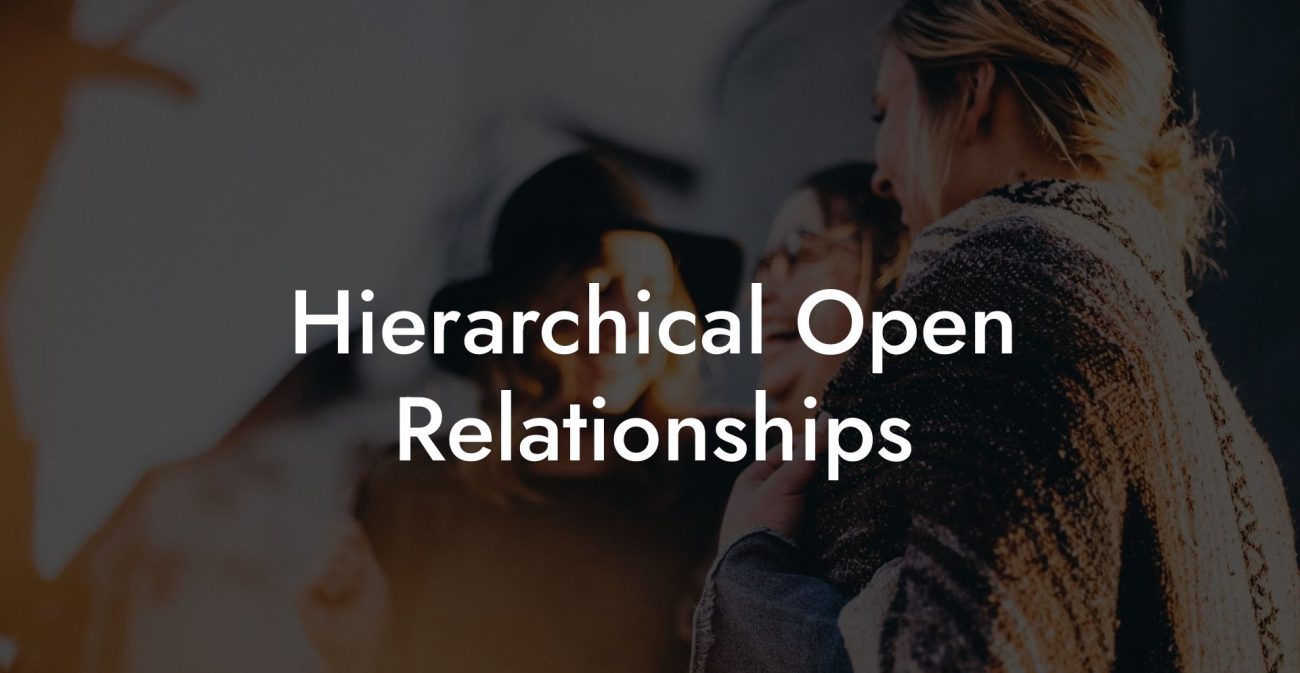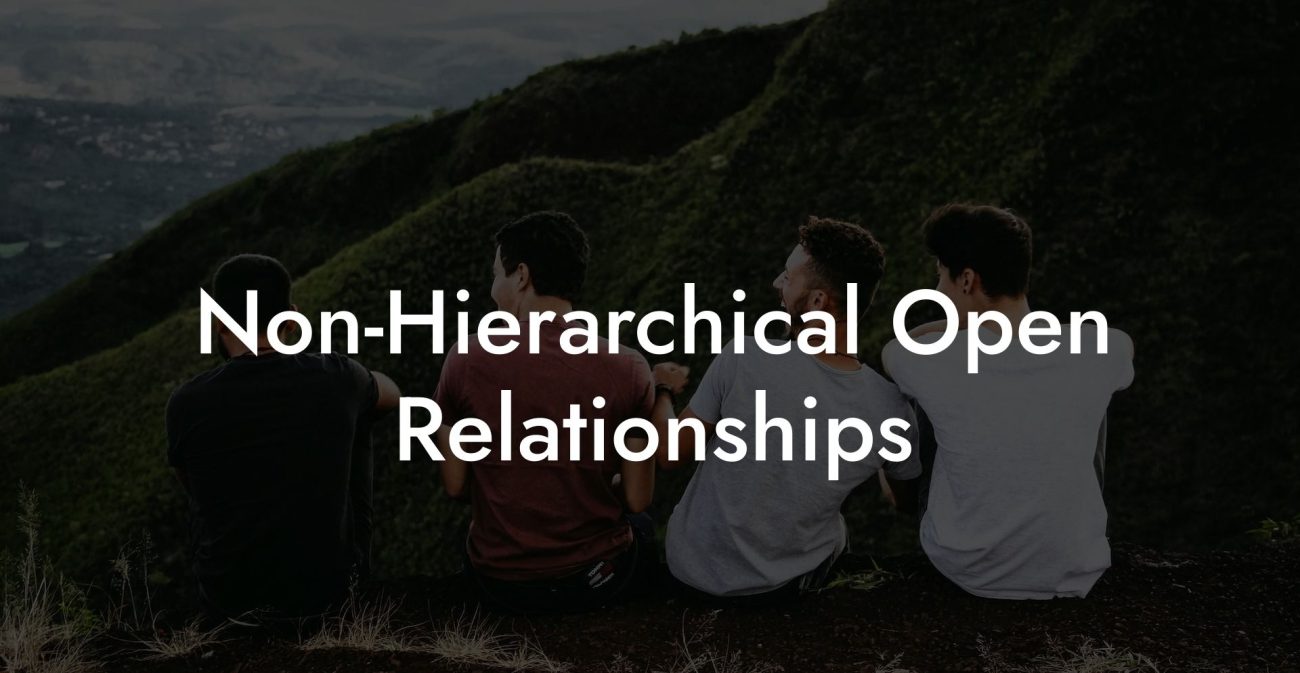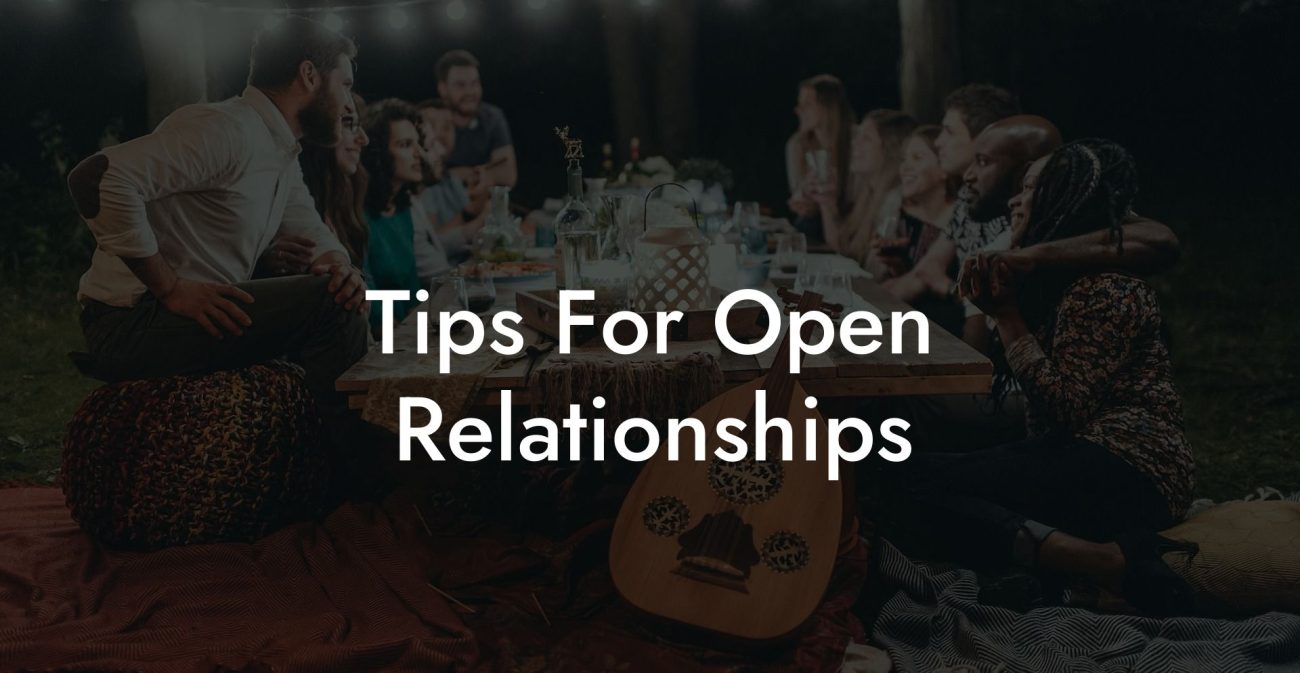Guide to Polyamorous Marriage

Picture a sprawling love metropolis where every relationship is a work of art, vibrant, unexpected, and designed by you. Imagine a world where the bonds of marriage aren’t confined to a single partner but bloom into a kaleidoscope of deep emotional connections, each one a unique masterpiece of trust, consent, and passion. This is the realm of polyamorous marriage, where commitment transcends traditional boundaries, and love flows as freely as creativity in a modern renaissance. In this guide to polyamorous marriage, we’ll explore what it means to build and sustain a marriage with multiple loving partners, the core principles that underpin these relationships, the benefits and challenges of such an arrangement, and practical strategies to help you thrive in a life where love is truly infinite.
Quick Links to Useful Sections
- Understanding Polyamorous Marriage
- Defining Polyamorous Marriage
- Historical and Cultural Context
- The Evolution of Marriage Models
- Core Principles of Polyamorous Marriage
- Open Communication and Transparency
- Consent and Mutual Respect
- Flexibility and Adaptability
- Emotional Awareness and Self-Reflection
- Benefits of Polyamorous Marriage
- Diverse Sources of Emotional Fulfillment
- Personal Growth and Self-Discovery
- Enhanced Communication and Conflict Resolution
- Flexibility and Freedom in Relationship Structure
- Community and Social Support
- Challenges of Polyamorous Marriage
- Managing Jealousy and Insecurity
- Time and Energy Management
- Negotiating Constantly Evolving Boundaries
- Social Stigma and External Pressures
- Strategies for Success in Polyamorous Marriage
- Establish Regular Communication Routines
- Set Clear and Flexible Boundaries
- Leverage Digital Tools for Organization
- Invest in Self-Care and Personal Growth
- Seek Community and Professional Support
- Real-Life Stories and Testimonials
- Case Study: Alex and Morgan’s Journey
- Case Study: Jamie’s Transformation
- Expert Insights on Polyamorous Marriage
- FAQ: Your Polyamorous Marriage Questions Answered
Understanding Polyamorous Marriage
Defining Polyamorous Marriage
Polyamorous marriage is a consensual relationship model where individuals form deep, long-term commitments with more than one partner. Unlike traditional monogamous marriage, which is built on exclusive emotional and sexual bonds, polyamorous marriage celebrates the possibility that love is abundant. In this model, all parties involved are fully aware of and consent to the non-exclusive nature of the relationship. The focus is on open communication, mutual support, and creating a structure that allows every partner to flourish.
At its core, polyamorous marriage isn’t just about having “more” partners; it’s about enriching your life with diverse forms of emotional support, intellectual stimulation, and physical intimacy. Each relationship contributes uniquely to your personal growth, and the network of bonds works together to create a resilient, dynamic family unit.
Historical and Cultural Context
The Evolution of Marriage Models
Throughout history, the institution of marriage has taken countless forms, from arranged unions based on economic or social alliances to the romantic monogamy that dominates today. However, non-monogamous practices have existed in various cultures for centuries. In many indigenous and ancient societies, relationships were fluid, and communal bonds often extended beyond a single partnership. These historical models remind us that monogamy is not the only way to structure intimate relationships.
In recent decades, the polyamorous movement has emerged as a conscious alternative to traditional marriage, driven by the desire for personal freedom, emotional authenticity, and ethical non-monogamy. Polyamorous marriage, as a modern expression, challenges the cultural status quo by advocating for love without limits. It embraces the notion that individuals can build meaningful, long-term bonds with multiple partners without sacrificing commitment or intimacy.
This cultural shift has been influenced by social movements that emphasize individual autonomy and the rejection of outdated norms. As society becomes more accepting of diverse relationship models, polyamorous marriage is gaining recognition as a valid and fulfilling alternative to monogamy.
Core Principles of Polyamorous Marriage
Open Communication and Transparency
In a polyamorous marriage, communication is not just important, it’s essential. Every partner must be open, honest, and transparent about their feelings, expectations, and boundaries. This ongoing dialogue ensures that all relationships remain consensual and that everyone’s needs are met. Regular check-ins, both as a group and individually, help preempt misunderstandings and resolve conflicts before they escalate.
Techniques such as “I” statements, active listening, and scheduled communication sessions are vital. Whether discussing daily routines or long-term goals, transparent communication forms the backbone of a healthy polyamorous marriage.
Consent and Mutual Respect
Consent is the lifeblood of polyamorous relationships. Every connection must be entered into freely, with all parties fully aware of the relationship’s structure. Mutual respect goes hand in hand with consent; each partner’s needs, boundaries, and autonomy must be valued equally. In a polyamorous marriage, this means recognizing that while one relationship may be more central than another, no partner is less important.
Regular reaffirmation of consent, especially as relationships evolve, is critical. By continuously ensuring that everyone is comfortable and respected, polyamorous marriages maintain a foundation of trust and equality.
Flexibility and Adaptability
Relationships are dynamic, and polyamorous marriage embraces that fluidity. What works at one stage of life might need to be adjusted as circumstances change. Flexibility in redefining roles, renegotiating boundaries, and even shifting the focus of intimacy is essential for long-term success.
This adaptability means that partners are encouraged to grow and change together, continuously recalibrating the relationship to meet evolving needs. Flexibility is not a sign of instability but a celebration of life’s unpredictable nature.
Emotional Awareness and Self-Reflection
In the intricate web of polyamorous relationships, self-awareness is a powerful tool. Understanding your own emotions, triggers, and desires enables you to communicate more effectively with your partners. Regular self-reflection, through journaling, meditation, or therapy, helps you manage feelings of jealousy, insecurity, or overwhelm.
This level of emotional intelligence not only enriches your personal growth but also contributes to the overall health of your marriage by ensuring that every relationship is nurtured with clarity and authenticity.
Benefits of Polyamorous Marriage
Diverse Sources of Emotional Fulfillment
One of the most significant advantages of polyamorous marriage is the opportunity to draw on a variety of emotional resources. Instead of relying on a single partner for all your emotional needs, you benefit from a network of connections, each offering unique forms of support. This diversity can lead to a more balanced and enriched emotional life, where different relationships complement one another.
For example, one partner might provide deep emotional security and stability, while another offers creative inspiration or intellectual stimulation. This mosaic of support creates a resilient and multi-dimensional foundation for personal happiness.
Personal Growth and Self-Discovery
Navigating multiple relationships challenges you to continuously reflect on your own identity, desires, and boundaries. The journey of managing diverse connections can lead to profound personal growth and self-discovery. Many individuals in polyamorous marriages report increased self-awareness, improved communication skills, and a greater understanding of their own emotional landscapes.
This ongoing process of self-improvement not only benefits your personal well-being but also strengthens your relationships, as each partner is encouraged to evolve and grow alongside one another.
Enhanced Communication and Conflict Resolution
The complex dynamics of polyamorous marriage demand effective communication. Regular, structured dialogues help to address issues before they escalate and foster a culture of mutual understanding. This constant interaction can improve your conflict resolution skills, leading to healthier, more resilient relationships overall.
The ability to discuss difficult topics openly and resolve conflicts constructively is a valuable skill that extends beyond your personal relationships and into all areas of life.
Flexibility and Freedom in Relationship Structure
Polyamorous marriage offers the freedom to design relationships that work for you. Without the constraints of traditional exclusivity, you have the flexibility to define what each connection means, how much time you devote to it, and how it evolves over time. This freedom allows for more authentic, tailored relationships that can adapt to changing circumstances and personal growth.
It’s a dynamic model that encourages creativity and innovation in how love is experienced and shared.
Community and Social Support
Many polyamorous couples find strength in the broader community. Being part of a network of like-minded individuals not only provides emotional support but also practical advice on navigating the challenges of non-traditional relationships. Social events, online forums, and local meet-ups can help build a robust support system that reinforces your own commitment to the poly lifestyle.
Challenges of Polyamorous Marriage
Managing Jealousy and Insecurity
Jealousy and insecurity are common challenges in any relationship, and they can be particularly pronounced in a polyamorous marriage. The central challenge is not the existence of multiple relationships, but rather the fear of inadequacy or loss that can sometimes accompany them. These emotions can stem from personal insecurities, past experiences, or societal conditioning that values exclusivity.
Addressing jealousy requires both self-reflection and honest dialogue with your partners. Acknowledging your feelings without judgment and discussing them openly is crucial. Sometimes, professional counseling may be needed to work through deeper insecurities.
Time and Energy Management
Balancing multiple relationships demands significant time and emotional energy. It can be challenging to ensure that each connection receives the attention it deserves without leading to burnout or neglect. Effective time management, clear scheduling, and mutual agreement on priorities are essential to maintaining balance.
Using digital tools such as shared calendars and planning apps can help coordinate your time effectively, ensuring that each partner feels valued.
Negotiating Constantly Evolving Boundaries
In polyamorous marriage, boundaries are not fixed; they evolve as relationships develop and personal needs change. This constant renegotiation can be both empowering and challenging. Without regular check-ins and open dialogue, misunderstandings and conflicts can arise.
It’s crucial to establish a routine for revisiting your agreements and being flexible enough to adjust them as needed. This process requires patience, empathy, and a commitment to continuous improvement.
Social Stigma and External Pressures
Despite growing acceptance, polyamorous marriages still face significant social stigma. External judgments and cultural norms can place additional stress on your relationship, sometimes leading to feelings of isolation or self-doubt. Overcoming these pressures involves building a supportive community and engaging in public education to challenge misconceptions.
Finding like-minded individuals and allies can help you navigate these external challenges and reinforce your confidence in your lifestyle.
Strategies for Success in Polyamorous Marriage
Establish Regular Communication Routines
Consistent, honest communication is the cornerstone of a healthy polyamorous marriage. Schedule regular check-ins, both as a group and individually, to discuss your feelings, review boundaries, and address any concerns. These conversations should be a safe space where all partners can speak openly and listen empathetically.
Using “I” statements, active listening, and even structured conversation formats can help ensure that these dialogues are productive and respectful.
Set Clear and Flexible Boundaries
Work together to define what is acceptable for each relationship within your marriage. Clear boundaries might include guidelines for time allocation, levels of physical or emotional intimacy, and how much detail is shared about outside relationships. Understand that these boundaries may need to be revisited and adjusted as your relationships evolve.
A written agreement or a digital document that outlines your boundaries can serve as a helpful reference and foster accountability.
Leverage Digital Tools for Organization
To manage the complexities of multiple relationships, digital tools can be invaluable. Shared calendars, scheduling apps like Trello or Notion, and relationship management software help coordinate time and ensure that each partner receives dedicated attention.
These tools also reduce the mental load of keeping track of multiple schedules, allowing you to focus on the quality of your interactions.
Invest in Self-Care and Personal Growth
Taking care of your own emotional, physical, and mental well-being is essential for the success of any relationship. Prioritize self-care activities such as exercise, meditation, hobbies, or simply taking time to relax. Personal growth not only improves your well-being but also enhances your ability to contribute positively to your relationships.
Regular self-reflection through journaling or mindfulness practices can help you understand your emotional triggers and ensure that you remain resilient in the face of challenges.
Seek Community and Professional Support
Building a robust support network is crucial in a polyamorous marriage. Engage with polyamory communities online and locally, attend workshops, and consider joining support groups where you can share experiences and learn from others. If needed, seek professional counseling from therapists or relationship coaches who specialize in non-traditional relationships.
External support can provide valuable insights and help you navigate both internal conflicts and external societal pressures.
Real-Life Stories and Testimonials
Case Study: Alex and Morgan’s Journey
Alex and Morgan have been in a polyamorous marriage for over a decade. Initially, the idea of balancing multiple relationships was daunting, especially for Morgan, who chose to remain monogamous. Through years of dedicated communication, regular check-ins, and clear boundary-setting, they have built a resilient relationship. Morgan learned to embrace the unique strengths that each additional connection brought, while Alex found that diversifying emotional support enriched their life together. Their journey illustrates that, with commitment and mutual respect, a polyamorous marriage can thrive despite challenges.
Case Study: Jamie’s Transformation
Jamie, who entered polyamorous marriage seeking deeper personal growth, initially faced significant challenges with jealousy and time management. By investing in self-reflection and establishing a routine for regular communication, Jamie was able to identify the root causes of insecurity and work on them constructively. Over time, Jamie and their partners redefined what intimacy meant, focusing on both emotional and non-sexual connections. This transformation not only deepened the bonds within their marriage but also led to profound personal growth and increased self-awareness.
Expert Insights on Polyamorous Marriage
Relationship experts emphasize that the success of a polyamorous marriage lies in its commitment to open communication, mutual respect, and continuous self-improvement. Dr. Elena Rivera, a therapist specializing in non-monogamous relationships, states, “Polyamorous marriage challenges conventional notions of love by requiring that every partner is heard and respected. When communication is prioritized, it can lead to a richer, more fulfilling connection that benefits everyone involved.”
Relationship coach Marcus Lee adds, “The key to thriving in a polyamorous marriage is adaptability. As individual needs and circumstances evolve, so too must the relationship. Regularly revisiting boundaries and engaging in honest dialogue is essential to maintain a harmonious balance.”
FAQ: Your Polyamorous Marriage Questions Answered
1. What is polyamorous marriage?
Polyamorous marriage is a consensual, long-term relationship model where individuals form deep emotional and romantic connections with multiple partners, all while maintaining transparency and open communication.
2. How is polyamorous marriage different from traditional monogamous marriage?
Unlike traditional monogamous marriage, polyamorous marriage embraces multiple, simultaneous relationships based on free consent and mutual respect, rather than restricting intimacy to a single partner.
3. What are the benefits of a polyamorous marriage?
Benefits include diverse sources of emotional fulfillment, opportunities for personal growth, enhanced communication skills, and the flexibility to adapt your relationship structure as your needs evolve.
4. What challenges might arise in a polyamorous marriage?
Challenges can include managing jealousy, balancing time and energy among multiple partners, negotiating constantly evolving boundaries, and dealing with societal stigma.
5. How important is communication in a polyamorous marriage?
Communication is absolutely critical. Regular, honest check-ins help ensure that all partners feel heard, valued, and secure, fostering a resilient and healthy relationship.
6. Can polyamorous marriage lead to deep, lasting connections?
Yes, many couples in polyamorous marriages report that their relationships are deeply fulfilling and resilient, thanks to the diversity of emotional support and the ongoing commitment to open dialogue.
7. How do we manage jealousy in a polyamorous marriage?
Address jealousy through self-reflection, honest communication, and, if necessary, professional support. Regular discussions about feelings and boundaries can help mitigate insecurity and reinforce trust.
8. What role does self-care play in a polyamorous marriage?
Self-care is essential to maintain your emotional, physical, and mental well-being. By taking care of yourself, you are better able to contribute positively to all of your relationships.
9. How can couples balance time between multiple relationships and their central bond?
Effective time management using shared calendars and scheduling apps, along with clear prioritization of quality time with each partner, is key to maintaining balance.
10. Where can I find more resources on polyamorous marriage?
Explore books such as "The Ethical Slut" and "More Than Two", listen to podcasts like “Multiamory,” and join online communities on Reddit and Facebook dedicated to polyamory for additional insights and support.
Resources and Community Support: Your Next Steps in Polyamorous Marriage
- "The Ethical Slut" by Dossie Easton & Janet Hardy – A groundbreaking book exploring the principles of ethical non-monogamy.
- "More Than Two" by Franklin Veaux & Eve Rickert – Offers practical advice and personal narratives on managing multiple relationships.
- Podcasts: "Multiamory" and other relationship-focused shows provide expert insights and real-life experiences in polyamory.
- Online Communities: Engage with forums on Reddit (e.g., r/polyamory) and Facebook groups dedicated to polyamory to connect with like-minded individuals.
- Therapy and Counseling: Consider seeking guidance from a therapist or relationship coach experienced in non-traditional relationship dynamics for personalized support.
With open communication, continuous self-reflection, and a supportive network, you can build a polyamorous marriage that is as dynamic and fulfilling as it is unconventional. Embrace the journey, challenge traditional norms, and allow your relationships to evolve into a vibrant tapestry of love.
Lost & confused by all of the terms, types and seemingly made up 3 letter acronyms?? We've got you. Check out our Ethnical Non-Monogamy Dictionary >>
Useful Interruption: Not sure which relationship vibe fits you best? Take our Relationship Test, it’ll give you the real insight into your natural relationship style. Then, dive into our binge-worthy guides (from the tried-and-true to the “wait, that’s a thing?”) and find the perfect relationship type for your life:
- Monogamy
- Open Relationships
- Ethical Non-Monogamy
- Solo Polyamory
- Non-Hierarchical Polyamory
- Hierarchical Polyamory
- Relationship Anarchy
- Swinging
Now back to the main article but yeah take the test...












